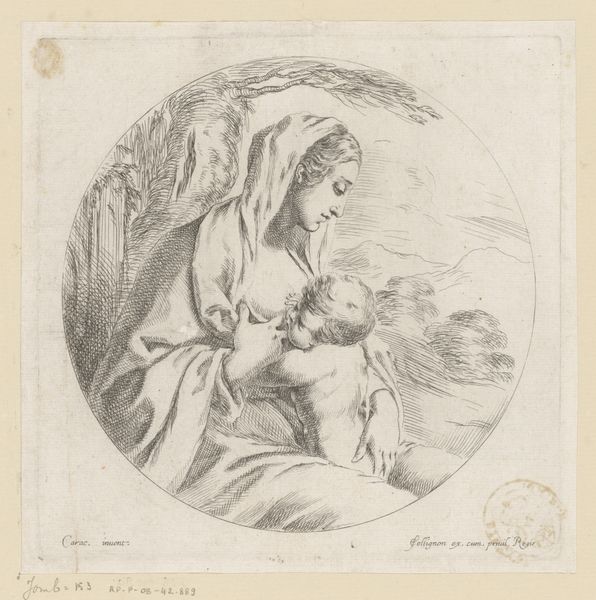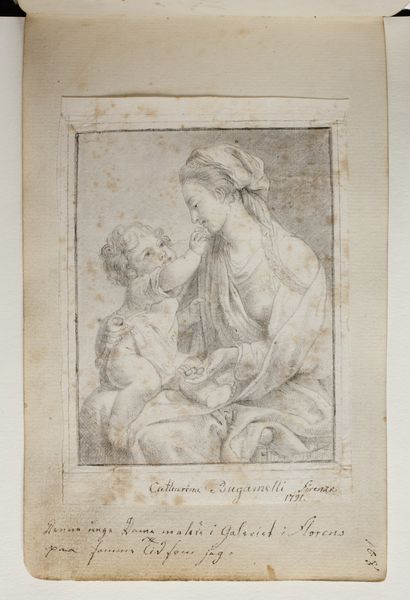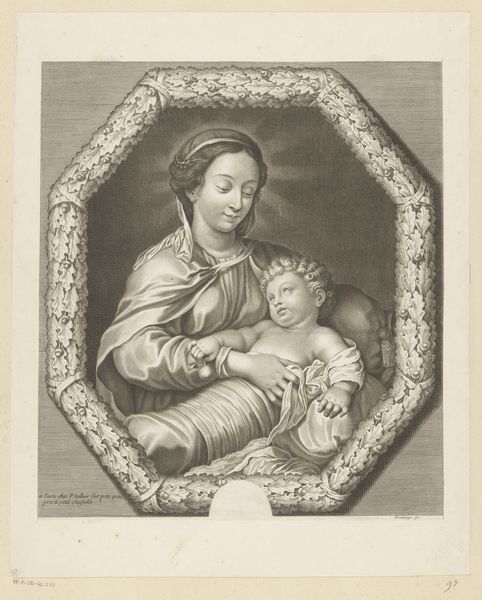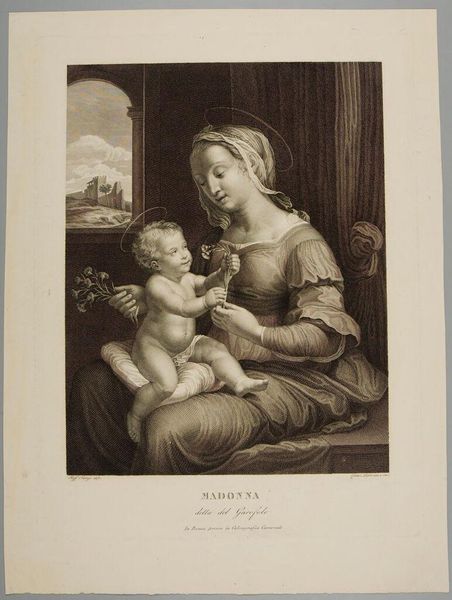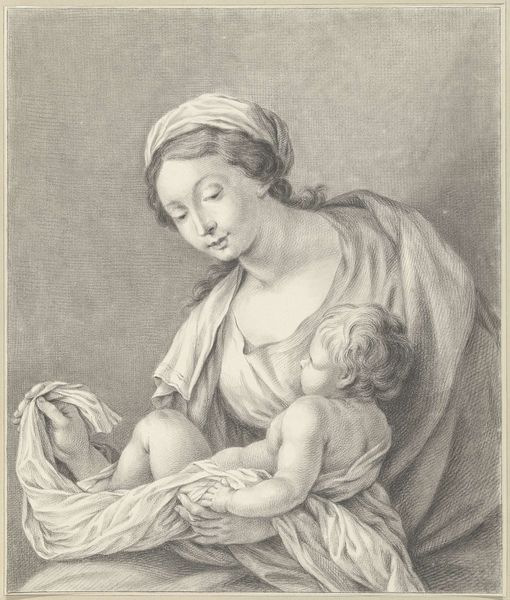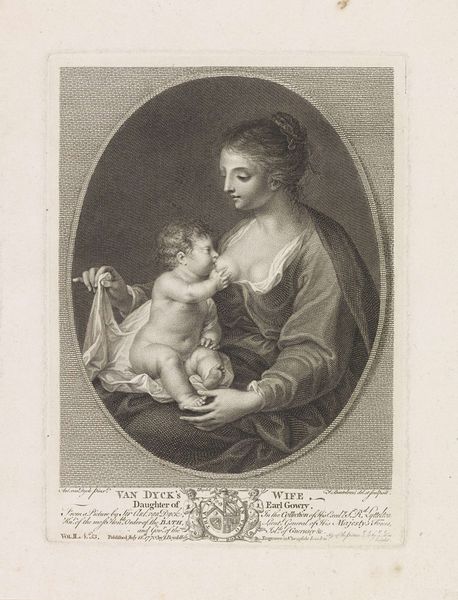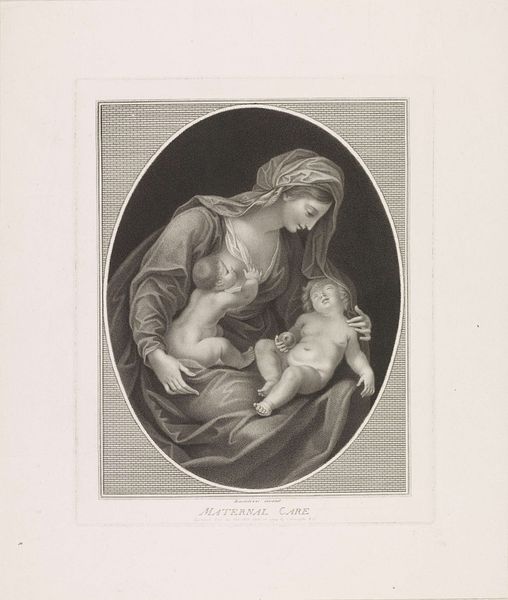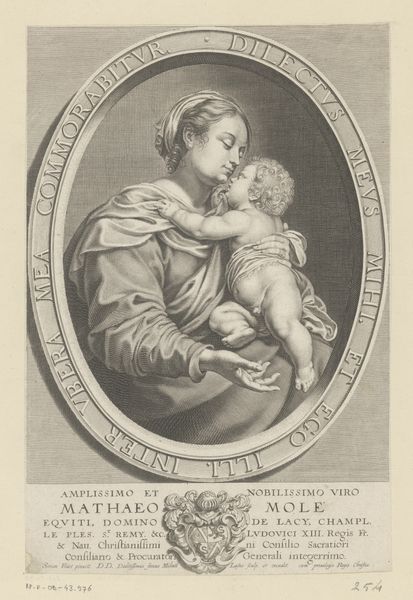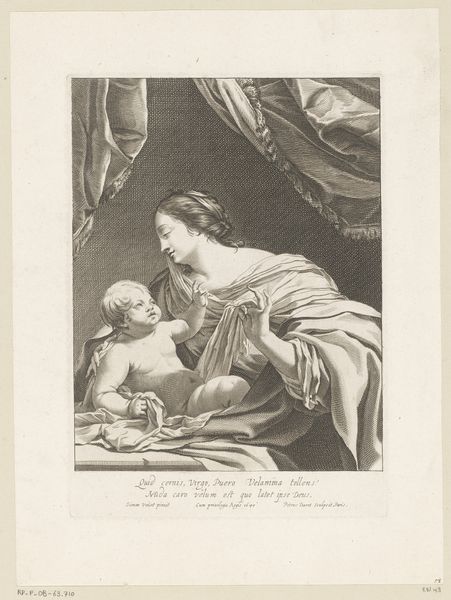
print, engraving
#
neoclacissism
#
toned paper
#
facial expression drawing
# print
#
portrait drawing
#
history-painting
#
engraving
Dimensions: 229 mm (height) x 171 mm (width) (plademaal)
Curator: What strikes me first is the almost tangible tenderness. The mother's face, etched with such gentle lines, seems to radiate pure, unconditional love. It feels incredibly intimate. Editor: You're right, there’s an undeniable sentimentality. This is “Mother and Child” by Oluf Olufsen Bagge, dating back to between 1813 and 1817. It’s an engraving, so a print, currently held at the SMK, the National Gallery of Denmark. The subject matter, of course, speaks to a deeply embedded trope in Western art history. Curator: Definitely a timeless theme. But Bagge’s take feels unique. It’s that fleeting moment, almost a secret shared between the two, the baby’s soft cheek against the mother's, creating a powerful sensation for us to connect to. The swirling lines above, almost like cherubic clouds, adds to that sentimental tone, right? Editor: Yes, the cloud-like forms create a sense of the celestial. Bagge's historical context is important. During this era, neoclassicism was prominent, and it seems he's echoing some of those visual themes, emphasizing form and line while injecting a romantic tenderness that appeals to a growing middle-class sentimentality around domesticity and motherhood. Reproducing this as a print also opens up the image's accessibility, creating a demand for emotional images during times of conflict, almost offering an idyllic respite, don’t you think? Curator: Exactly! It's not just representation; it's emotional accessibility made physically accessible, like spreading whispers of love far and wide. The delicate hatching in the engraving gives a softness which seems to mimic the texture of skin, it's quite effective really. It feels universal but also uniquely vulnerable and personal. Editor: Indeed. It’s intriguing how Bagge navigates this visual balance. He borrows the formal language from neoclassicism to elevate this rather everyday subject—motherhood—to the realm of art and idealization while the softness and obvious sensitivity add to that emotional weight. Curator: Seeing it here today reminds us how powerful the bond between mother and child is. And, regardless of art movements and critical assessments, perhaps this enduring subject strikes at the core of our collective experiences, evoking emotions we all carry. Editor: I agree completely. In a museum context, it provokes considerations around the public and private roles of art in shaping our understanding of society.
Comments
No comments
Be the first to comment and join the conversation on the ultimate creative platform.

